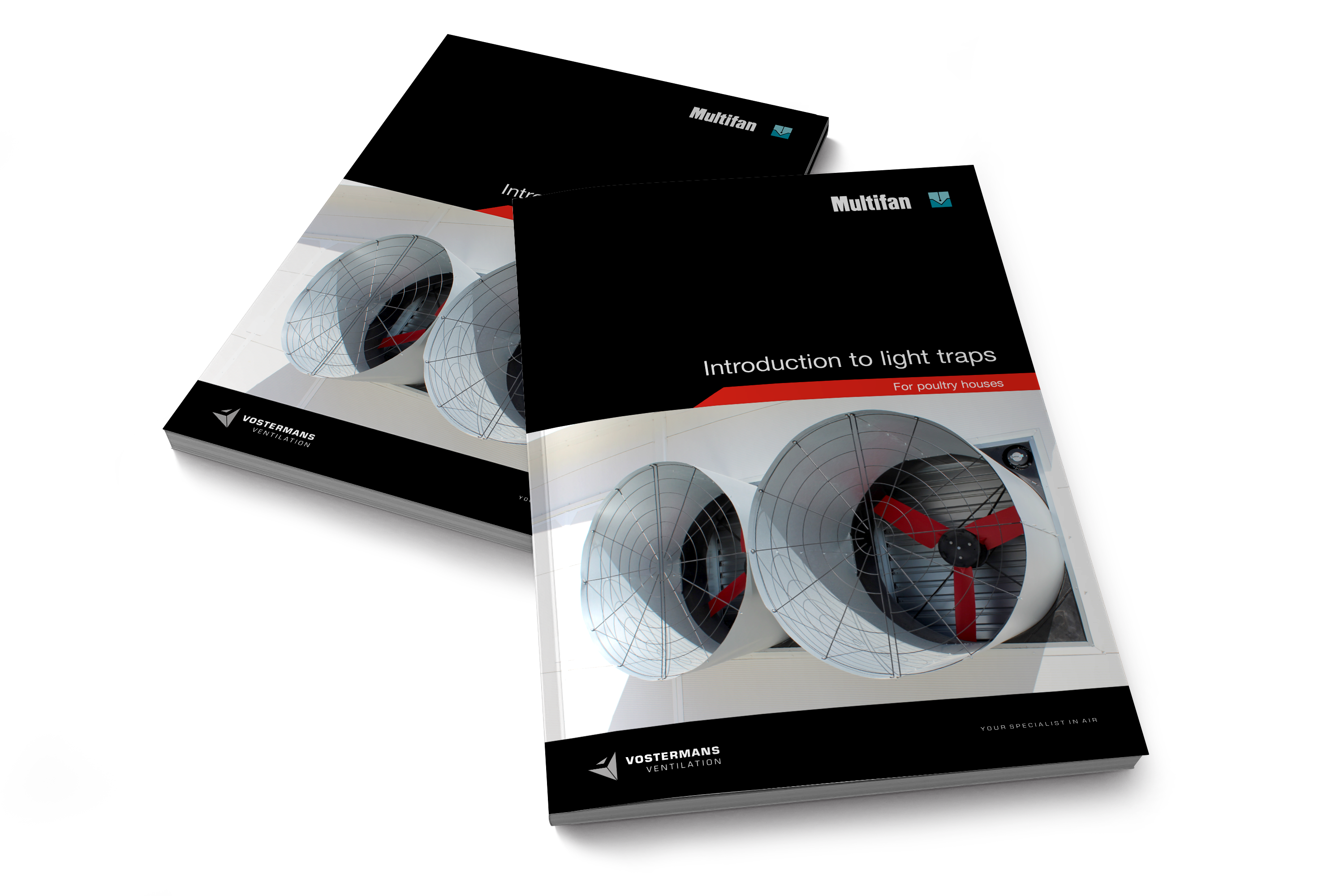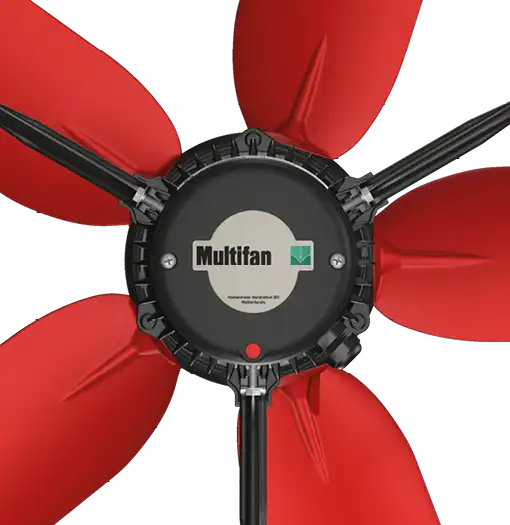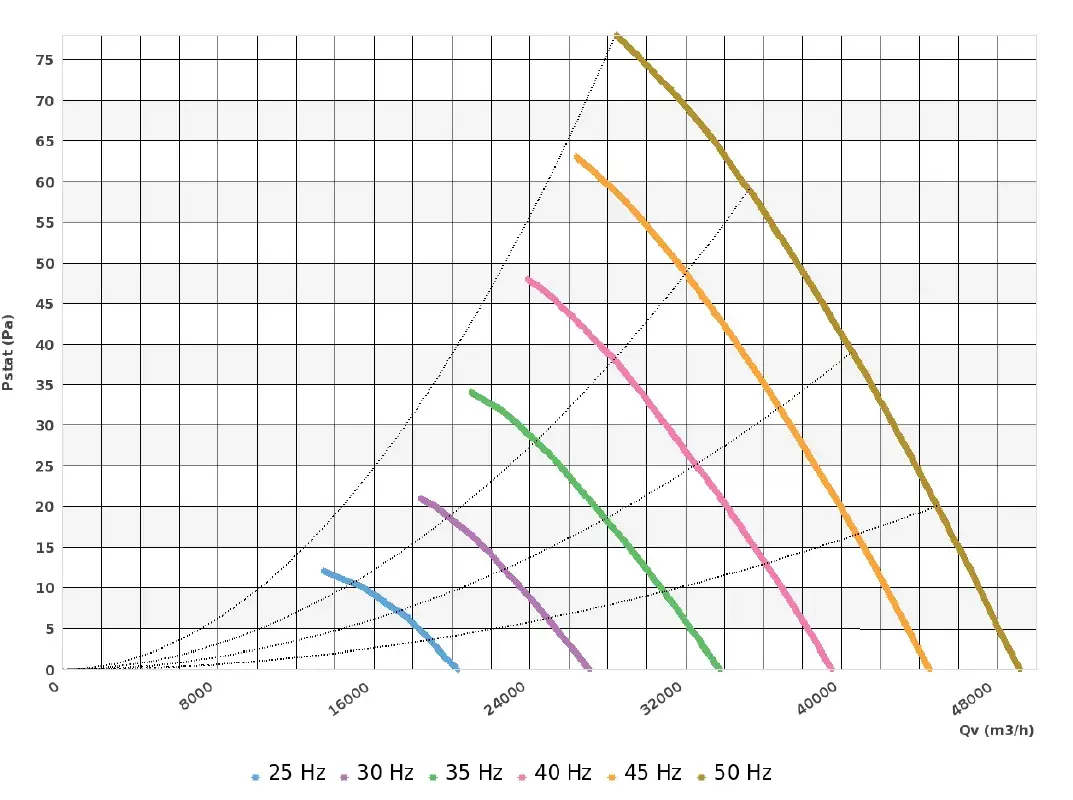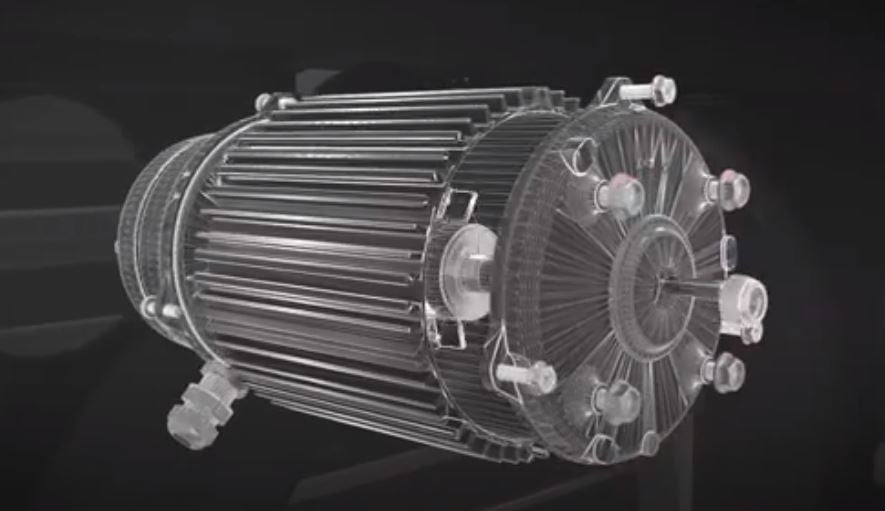In the poultry industry, light traps play an important role in achieving the best possible
bird productivity in your house. As day length and light intensity are often precisely
controlled, light ingress from outdoors is undesired. For t his reason, so-called light traps were designed to block light ingress through fans while they are in operation. In this article we give a short introduction to using light traps for fans and how different fans are affected by light traps.
Finding the balance between light transmission and air resistance
A logical side effect of restricting light is the restriction of airflow. This is why our light traps were constructed with an optimal balance between:
- resistance to light transmission
- resistance to airflow
The resistance in airflow is kept to a minimum by the aerodynamically shaped vanes, positioned in a vertical direction preventing dust or buildup of condensation on the light trap itself. Left unchecked, these could eventually lead to a negative effect on airflow.
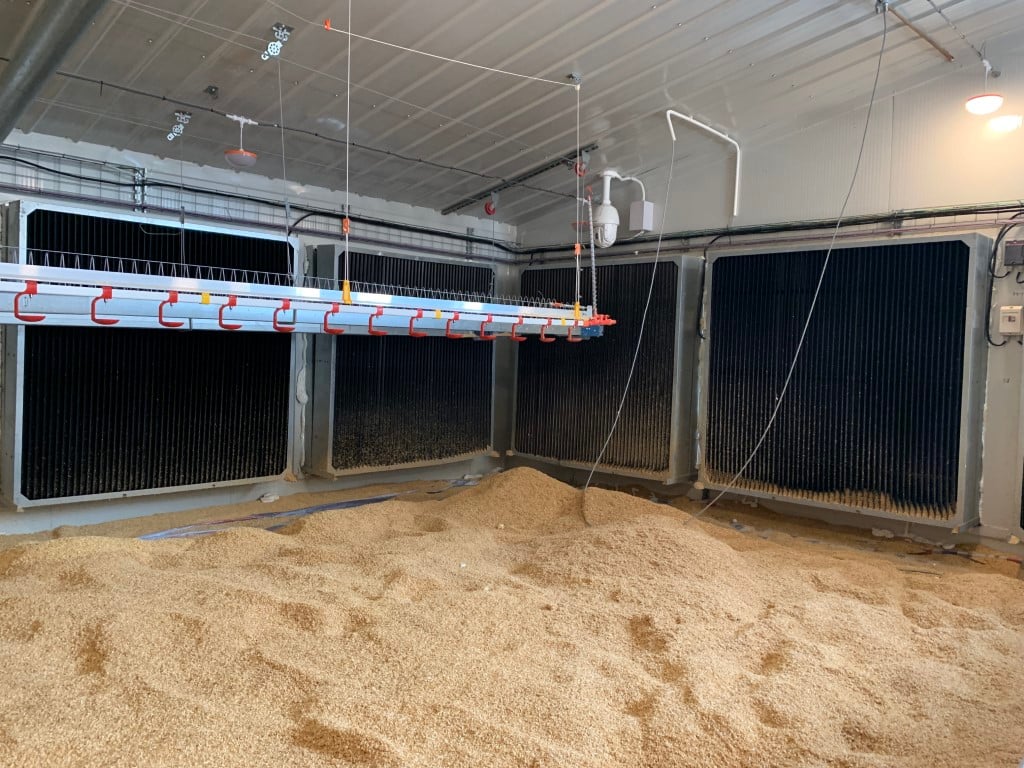
Installation and maintenance
Our light trap’s robust and straightforward design enables quick assembly and installation on all our Box and Cone Fans. Light traps can be placed either directly in front of an exhaust fan, or in other words mounted on the suction side of the fan, or it can be positioned separately from the fan. For instance, it could be placed on the air inlet side.
The effects on the airflow of different fans
We measured the characteristics of the different light traps using our wind tunnel.
Naturally, this data is of great importance to correctly calculate the requested
ventilation capacity in a barn. The remaining performance of a fan with a light trap can be found by plotting the original fan characteristic curve against the resistance curve of the light trap. The intersection between the fan characteristic without light trap (grey line), and the resistance curve of the light trap (red line), gives us the new performance of the fan with light trap at 0 Pascal (black line).

Calculating fan performance
This article is part of our white paper 'introduction to light traps'. Besides the content in this blog, we measure the performance of different fans with light traps under different circumstances and explain what to pay attention to. Download our white paper 'Introduction to Light Traps' here.
